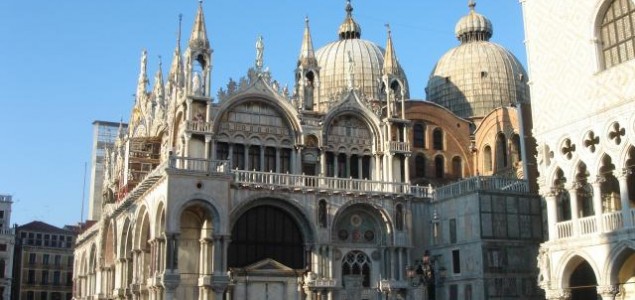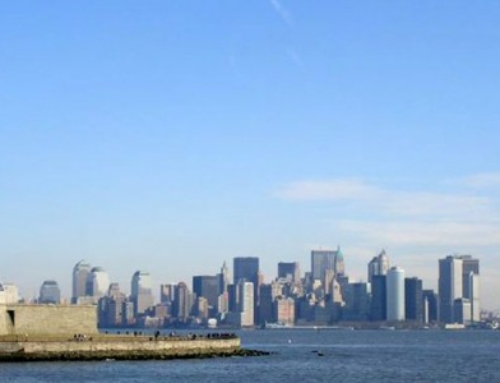During the 9th century, Venetian merchants stole the most important relic of the evangelist St. Mark, what was believed to be his earthly remains, from Alexandria and brought it to Venice. A first St. Mark’s church was founded to house the relic. St. Mark became the patron of Venice and his sign, the winged lion, became the ubiquitous symbol of the city. In 976, the old church burned down together with the Doge palace and 200 other houses.
Construction on the current St. Mark’s Basilica was started the same year. The basilica in byzantine style was finished in 1094. According to catholic belief, St. Mark’s relic that was lost in the fire of 976 reappeared in a miracle upon the dedication of the basilica. It is still housed in the church today. St. Mark’s Basilica used to be the church of the Venetian Republic and the palace church of the Doge. With its domes over each end and the middle of its cross-shaped ground plan, it is considered the main influence on later Italian dome constructions of the renaissance.







